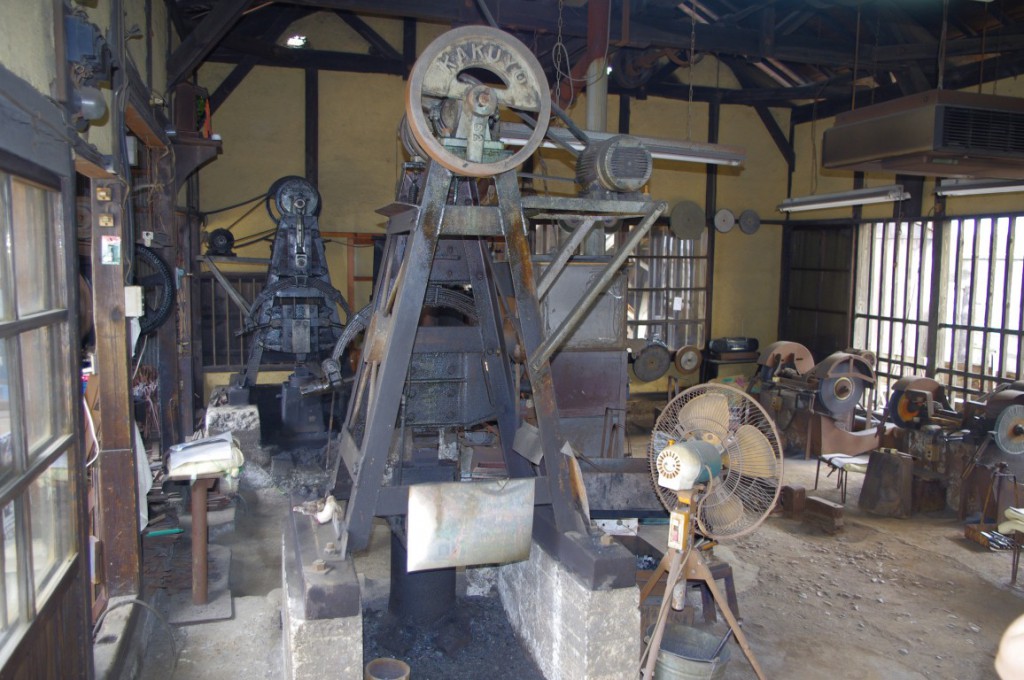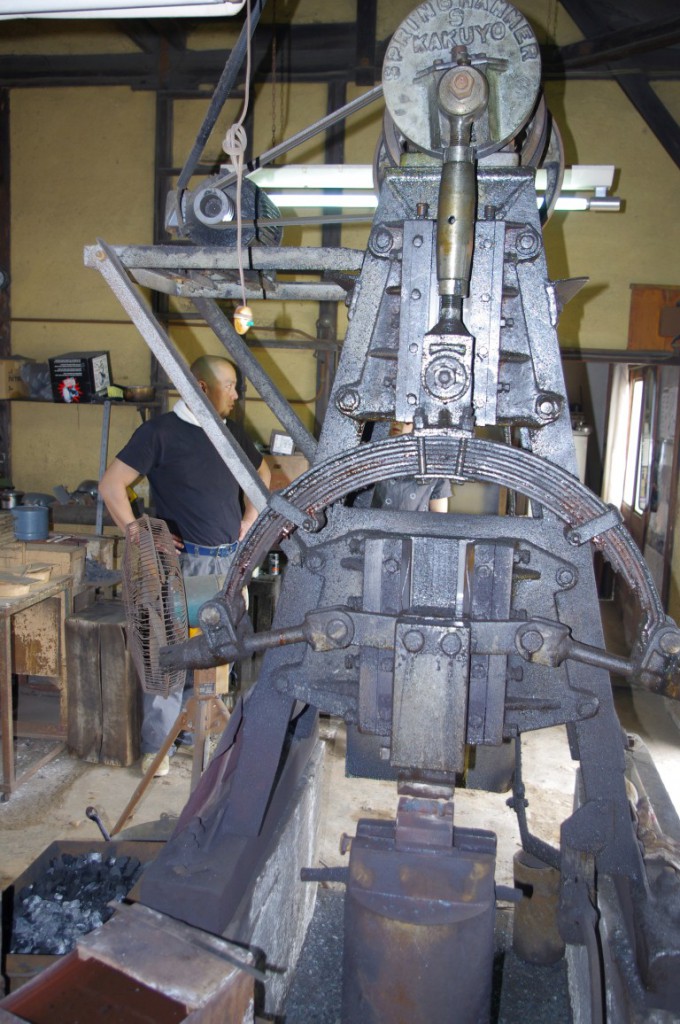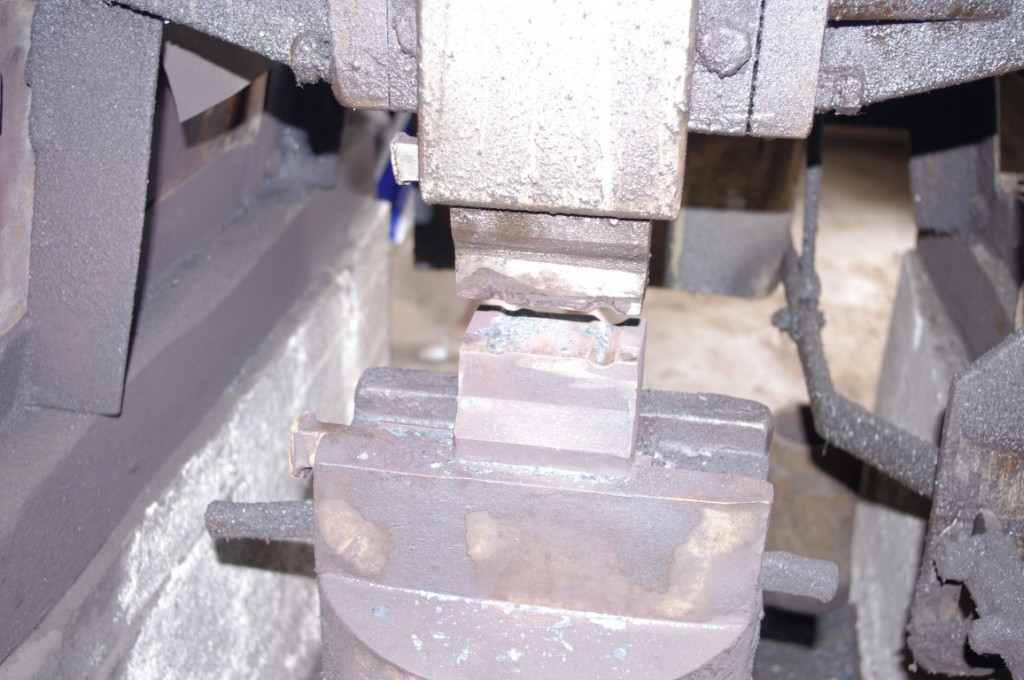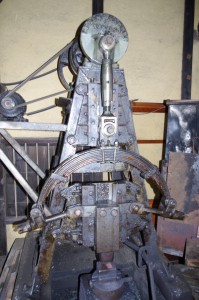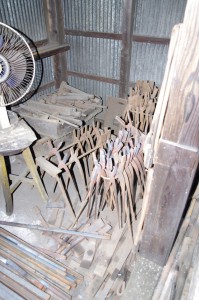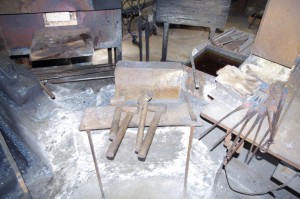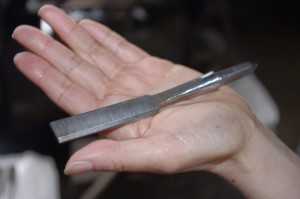machinist@lists.ibiblio.org
Subject: Machinist
List archive
[machinist] Road Trip; Ouchi chisels. « Tools from Japan blog.
- From: Lawrence London <lfljvenaura@gmail.com>
- To: machinist@lists.ibiblio.org
- Subject: [machinist] Road Trip; Ouchi chisels. « Tools from Japan blog.
- Date: Tue, 31 Dec 2013 23:39:12 -0500
Road Trip; Ouchi chisels.
Hello again Faithful Reader,
On this just past Wednesday my co-pilot (Akiko!) and myself took a drive in Miki city to pay a visit to a few folks.
First up, was a lunch date with Mr. and Mrs. Koyama(ichi) at a Japanese style restaurant that Mr. Koyama found out about with his tennis club friends. (Yes, he plays tennis.) However, as we were running a little late, we missed our intended rendezvous point and had to leave our car (with camera inside) at the tennis club while we got chauffeured to lunch.
(A word of warning, if Mr. Koyama offers you a ride, make sure you pop a few brave pills first. He drives fast.)
So, as we had no camera with us, no pictures are to be had. I’ll remedy that problem in a few weeks.
Lunch was good, I fought with Mrs. Koyama over the bill and won (and kicked generations of Japanese manners in the teeth in the process. Sometimes it’s good to be a non-local!) and then we went as saw their house, all freshened up.
But the key mission on this trip was to meet Mr. Ouchi, who makes chisels.
(Ouchi is pronounced Oh-oochie. It could be written in English as Oouchi or with an accent on the ‘O’ to extend it’s sound. It is most certainly not pronounced ‘ouchy’ as in “that hurts”. Although you might say that if an Ouchi chisel cuts you…)
To those of you who are unaware of Ouchi, they are ‘the other brand’ that is very prevalent in Western Japan. Take a visit to any decent tool store west of the Kansai area (Kyoto, Kobe and Osaka) and you will most likely find chisels from Koyamaichi, Ouchi or both. They’re the brands bought by folks who hang off a chisel for a living buy when they need to get the job done and need a tool they can rely on. Perhaps not the top tier of makers who can command very high prices and have long waiting lists, but their tools are all function, little flair. Of course, as part of that function, they’re very well finished and performance is without question good. There are definitely other brands of chisels out there and readily available, but in my travels throughout much of Western Japan, I always seem to find Ouchi and Koyamaichi. Maybe it’s some kind of magnetic attraction?
So, that’s who we went to see.
After arriving, the first thing to do was to actually find Mr. Ouchi which wasn’t an easy task. The workshop is spread out over several buildings on both sides of a small but busy road and includes his house as well. As it turned out, the other side was a warehouse area, but the sign was up there and a surprise was lurking inside the ‘warehouse’.
After tracking him down, walking past plenty of well used (but not recently) equipment in a couple of out buildings, we found ourselves in the current workshop, which is actually quite small.
All that is inside there are a couple of power hammers (leaf spring type), a forge (for making stuff hot, coal fired) a string of grinders along a wall, a few other bits and pieces and a small office area.
Starting with the power hammers;
This one here does the shaping work of the necks, the further one does the ‘hard’ work. Note that the area is not so large, but it’s not a problem as there’s only one fellow working here at any given time. Not neat and tidy, but not cluttered. And dirt floor!
The reverse side of the previous power hammer. Unlike the massive air powered hammer at Tsunesaburo, this one has a moderately sized electric motor driving the main shaft up the top. Working in the reverse to a steam train, this turns rotary motion (from the motor) into linear motion via a crank and connecting rod you can see at the top. The motion is transferred to the leaf spring which then transfers the motion to the ‘hammer’ toward the bottom of the picture here.
(That’s Mr. Ouchi in the background.)
Looks like an awfully complex arrangement, but as the hammer must have some ‘give’ to it, the spring allows the head to do it’s job over a broad range.
Most impressive about these hammers is that they are very old, not very clean except where the important slides are located, where they are both polished smooth and spotlessly clean. I was also surprised at how light they appeared to be, with the main frame being little more than (big!) angle iron.
At the bottom of this particular hammer;
A pair of dies to form the round necks on chisels. No particular size (refrain from impersonating Tom Jones here please) just a general ’round’ to get the shape mostly forged into shape.
What I did notice was that the upper ‘pulley’ was flat, and the age of these hammers put them right into the ‘line-shaft’ era of tooling.
What does that mean?
Well, long before electricity became the mainstay of motive power in industry, there would be a long shaft running through a manufacturing building that each machine would take it’s motive power from through a wide leather belt. Often these shafts would be in the ceiling, driven by a steam engine, water wheel or some other large, reliable and powerful prime mover of some kind.
A quick inspection showed that the line shaft was still in place…
Note the large, flat ‘wheels’ on it, they’re the pulleys that would drive the leather belts that would drive the machines.
What was very interesting was that at some point (or even as an original installation) this line shaft was driven by a very large electric motor, as you might be able to see at the very top of this picture, with three v-belts connecting it to the line shaft. I think this is most likely a retro-fit of some kind, but perhaps not. I didn’t ask!
And the power hammer that is used for most of the hard work, situated right next to the forge on the right there.
What might not be obvious is the pedal situated on the right side there. This connects to a clutch on the upper shaft so that the speed and power of the hammer can be easily adjusted on the fly.
This contraption is a shear, again a relic from the line shaft days, retrofitted with it’s own electric motor. Used to trim steel to size quickly.
Tongs anyone?
I suppose this is an ‘anvil’ but it’s more like a block of steel than anything else. Chisels don’t come in too many shapes, so something simple and flat is perfectly adequate.
What’s going on here?
Both of these chisels are the same width, thickness and have bevelled tops. The only difference is that round part the socket rests against.
One of them is ‘Kanto’ style, the other is ‘Kansai’ style…
Kanto translates as ‘related to the east’, or more commonly known as Tokyo and surrounding areas.
Kansai translates as ‘related to the west’, or more commonly as Osaka and the surrounding areas.
(You might have realised that that the large international airport serving Osaka is called Kansai International Airport…)
I know which is which, but do you?
Take a guess, the answer will be shown at the end of this blog post. Good luck!
(Hint; if you’ve got a Japanese chisel handy and you know where it was made, take a look at it. It might help, but it might not too!)
A baby chisel, recently hatched. When it grows up, it’ll be pointy. ![]()
Some of you may have read something about Japanese tools needing their ‘beauty sleep’.
If not, here goes.
A Japanese tool is made by forging a thin layer of very hard steel to a softer piece of steel or iron by way of welding in a forge. That’s what the forge and power hammer are for. The steel used in many (but not all) Japanese blades is often referred to as ‘white’ steel or ‘blue’ steel. This relates to the paper wrapping on the raw material as supplied to the blade smith.
White steel is a very clean steel alloy of iron, carbon and anything else reduced to a point where any detrimental effects are functionally eliminated.
Blue steel is white steel with the addition of tungsten and chromium to improve it’s abrasion resistance (tungsten) but without making the resulting steel too brittle to use (chromium).
For blades that will benefit from improved edge life due to abrasion resistance, a measure of rust resistance and will not be subject to jarring and undue shocks such as plane blades, certain knives and paring chisels, then blue steel is an ideal edge steel.
For blades that need to stand up to some shock/abuse, be easy to sharpen (and repair if damage does occur) and will benefit more from superior toughness than edge life such as struck chisels, saws and some knives, then white steel is the better choice.
Yes, using one steel for another task is generally ok, but the above is a generally sound rule to abide by.
Either way, these Japanese steels have been bashed around during the welding process and smacked around some more getting them into shape. The heating and cooling that occurs during these processes introduces stresses in the steel and between the steel and soft iron/steel backing material.
And a blade that is stressed will lash out in the form of chipping, cracking and general misbehaviour, exacerbated by the way in which these blades are heat treated which leaves them very, very hard.
In order to relieve the stresses, the blades require what I call their ‘beauty sleep’.
This sleep can be in the form of a short, warm sleep or a long, cool sleep. Either way, precluding this step will result in a very poor blade. The oft recited criticism that “Japanese blades (chisels!) are brittle” results from insufficient rest between forging and heat treatment.
In the case of Tsunesaburo, the sleep is a short (3 days) hot sleep in a large, gas fired kiln. For Koyamaichi, it’s a long cool sleep in a bucket of ash for a month.
Ouchi chisels get a short, warm sleep in the device shown below.
This is basically an electric heated kiln filled with carbon rich material. The chisels go in, they get heated up and allowed to cool down again slowly, relieving stress and making for a happy blade.
Once this is done, the chisels are finish ground and buffed smooth before being heat treated (hardened, then tempered) and the back hollow is ground into the blade after the heat treatment is completed so that any de-carburisation that may have occurred during the process is removed, resulting in a tool with no ‘bad’ steel in it, and it’s ready to use (after being sharpened) and won’t behave badly.
Then the chisel has it’s handle and socket fitted, any extra details are done and the chisel is ready to go.
And that’s about it really.
- [machinist] Road Trip; Ouchi chisels. « Tools from Japan blog., Lawrence London, 12/31/2013
Archive powered by MHonArc 2.6.24.
